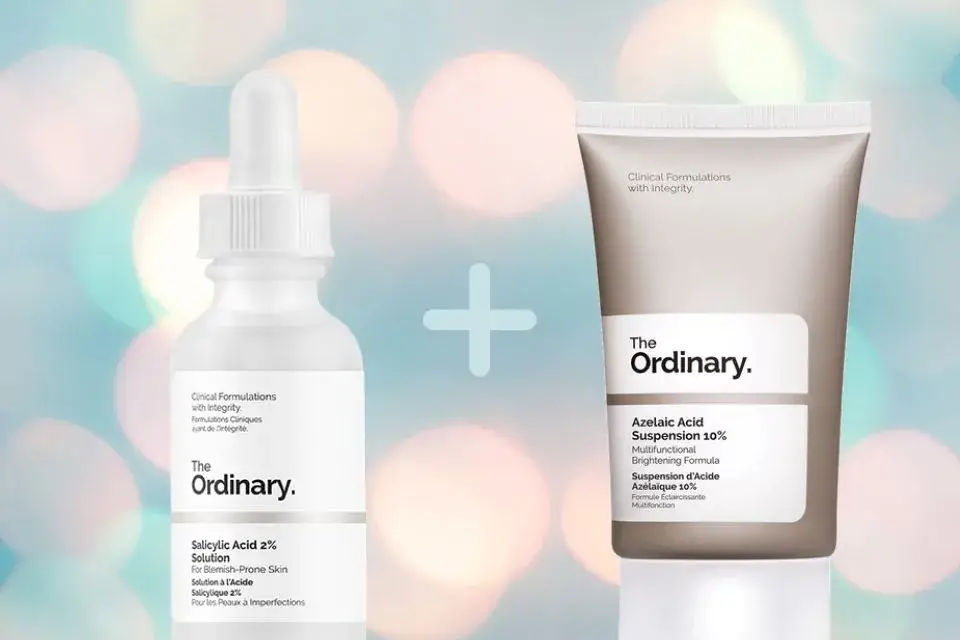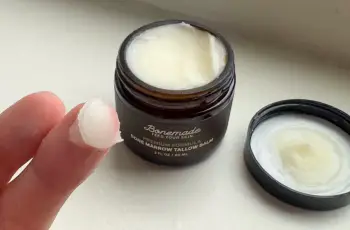
Can Azelaic Acid Be Used With BHA?
In the ever-evolving world of skincare, certain ingredients tend to steal the spotlight. One of those is salicylic acid, a well-known beta hydroxy acid, or BHA, loved for its acne-fighting powers.
But while salicylic acid enjoys all the fanfare, some equally effective yet lesser-known ingredients often go unnoticed. Azelaic acid is one of those unsung heroes that deserves a closer look.
Many people are now asking, “Can I use azelaic acid with BHA?” Let’s explore how these two ingredients compare, whether they work well together, and the best ways to include them in your routine.
What Is Azelaic Acid?
Azelaic acid is a naturally derived dicarboxylic acid, found in grains like wheat, rye, and barley. However, in skincare, a synthetic version is used to ensure stability and purity.
This acid is gentler than many exfoliating acids, especially alpha hydroxy acids (AHAs) like glycolic or lactic acid. It works on the skin without triggering excessive irritation.
Azelaic acid helps fade dark spots, reduce redness, and improve uneven tone. It’s also widely praised for treating post-acne scarring and pigmentation.
What makes azelaic acid especially useful is that it exfoliates the skin while calming inflammation. This makes it a go-to for sensitive or rosacea-prone skin.
Another key benefit? Unlike other exfoliants, azelaic acid does not significantly increase sun sensitivity. Still, wearing SPF 30 or higher daily is non-negotiable.
With that refresher, let’s turn to the topic at hand—whether or not you can mix azelaic acid with BHA.
Can You Use Azelaic Acid After BHA?
Technically, yes—you can use azelaic acid after BHA. But in practice, it’s not the best approach for most skin types.
Azelaic acid, while effective, can be tricky to formulate. Products rarely contain more than 10% because higher concentrations tend to become gritty or irritating.
On the other hand, BHAs like salicylic acid are powerful deep pore exfoliants. They penetrate oil and clear out congestion, making them ideal for acne-prone skin.
Layering azelaic acid immediately after BHA may increase your risk of irritation. The combination can lead to dryness, stinging, or sensitivity, especially for reactive skin.
That’s why many skincare experts advise alternating them instead of layering them. You’ll still get all the benefits—just with far less risk of a flare-up.
Should I Use Salicylic Acid and Azelaic Acid Together?
Yes and no. You can use both in your skincare routine, but you should avoid using them at the same time. Here’s how to make it work.
Both azelaic acid and salicylic acid are exfoliants. Using them together can overwhelm the skin’s barrier, leading to dryness, redness, or irritation.
To avoid that, alternate their use. For example, use salicylic acid one night, then azelaic acid the next. This rotation gives your skin time to recover between treatments.
For best results, use these exfoliants in your evening skincare routine. This allows them to work without interference from sunlight or environmental pollutants.
And always follow with SPF 30+ in the morning. Even if azelaic acid isn’t as photosensitizing as other acids, sun protection is essential to prevent further pigmentation.
How Azelaic Acid Works Differently Than BHA
While both azelaic acid and salicylic acid help exfoliate the skin, they go about it in different ways.
Salicylic acid is oil-soluble. It dives deep into the pores to unclog them, making it ideal for oily or acne-prone skin.
Azelaic acid, meanwhile, is water-soluble. It exfoliates the skin’s surface more gently and targets pigmentation by inhibiting tyrosinase, the enzyme responsible for melanin production.
In short, salicylic acid cleans out your pores, while azelaic acid helps reduce inflammation and fade spots from past breakouts. Using both—just not together—can maximize results.
What If I Also Use Niacinamide?
Great news: azelaic acid, BHA, and niacinamide can all work well together—just not at the same time in the same routine.
Niacinamide is a humectant and skin barrier booster. It helps lock in moisture, reduce redness, and regulate oil production.
It also calms the potential irritation caused by more active ingredients like salicylic acid or azelaic acid.
Some products combine niacinamide with BHA or azelaic acid already. But if you’re using them separately, try pairing niacinamide with just one active ingredient at a time.
For example, use niacinamide with salicylic acid on one night. The next evening, combine niacinamide with azelaic acid. This lets each ingredient shine without overwhelming your skin.
Can I Use All Three: BHA, Azelaic Acid, and Niacinamide?
Yes, but ideally not all in the same routine. It’s best to rotate these ingredients throughout the week to maintain skin health and barrier function.
Here’s a sample routine:
Monday: Salicylic acid + niacinamide
Tuesday: Azelaic acid + niacinamide
Wednesday: Rest or use hydrating products only
Thursday: Repeat Monday
Friday: Azelaic acid solo or with niacinamide
This gives your skin time to absorb each active without risk of irritation. It also allows you to enjoy their full benefits over time.
What Are the Benefits of Using Azelaic Acid?
Fights acne: Reduces bacteria and calms inflammation.
Reduces redness: Ideal for rosacea and sensitive skin.
Brightens skin tone: Fades dark spots and evens pigmentation.
Improves texture: Gently smooths and refines the skin surface.
Safe for sensitive skin: Less irritating than most acids.
What About Sensitive Skin?
If your skin is dry, sensitive, or prone to flare-ups, use extra caution when trying any new active ingredient.
Always do a 24-hour patch test before applying azelaic acid or salicylic acid to your face.
Introduce one ingredient at a time and monitor how your skin reacts. Avoid trying multiple new products all at once.
Consult with a dermatologist before introducing actives if you have eczema, rosacea, or a history of skin reactions.
Final Skincare Tips
Don’t mix all actives at once—rotate for best results.
Apply acids only at night to avoid UV sensitivity.
Always wear SPF 30 or higher in the morning.
Use niacinamide to soothe and hydrate.
Listen to your skin. If it’s irritated, simplify your routine.
In Summary: Can You Use Azelaic Acid With BHA?
Yes, but don’t layer them together. Alternate their use on different nights to avoid irritation while still enjoying their unique benefits.
Salicylic acid is your go-to for clearing pores and managing oil. Azelaic acid reduces pigmentation, soothes redness, and helps with long-term skin clarity.
Pair either with niacinamide for added hydration and comfort. Just remember: simplicity is key when it comes to powerful actives.
If you have sensitive or reactive skin, consult with a skincare professional before starting a new routine. Your dermatologist can recommend the safest and most effective options tailored to your needs.
For more skincare tips, exclusive giveaways, and the latest product launches, follow us on Instagram. We’re here to help you glow—one ingredient at a time.


